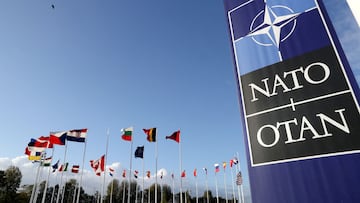What are the differences between NATO, the UN and the EU?
All three entities hold significant power at the international level, but they differ in their functions and origins.

The conflict between Russia and Ukraine is not limited to Ukrainian territory but also extends to an institutional level, where international organizations play a significant role. The North Atlantic Treaty Organization (NATO), the United Nations (UN), and the European Union (EU) are some of the major players involved. Despite their common goal of resolving international conflicts and membership, there are several differences among these organizations, such as their origin, problem-solving methods, and level of influence.
The UN
In the case of the United Nations, founded in 1945, with headquarters in New York and 193 member states, it has a deep-rooted social character. One of the primary objectives of the United Nations is to promote and protect human rights, maintain international peace and security, uphold international law, and provide humanitarian aid wherever it is needed. Humanitarian aid, to limit the impact on the civilian population, has been one of the main missions within the conflict.
Additionally, the UN also acts as a diplomatic body and mediates international conflicts. However, with Russia being a member of the UN Security Council, the organization’s power is limited. The five permanent members of the Security Council cannot be sanctioned since any actions brought against them can be vetoed. Members of the council can still bring sanctions at the domestic level, but they cannot be levied through the United Nations.
NATO
While the UN has a more social profile, the North Atlantic Treaty Organization is based on military cooperation. Also known as the North Atlantic Alliance, it is currently made up of 32 countries and provides military support to member states, in the case that they are attacked. Established in 1949 and based in Belgium, the treaty of this organization states that an attack on any member state will be considered as an attack on all member states, and a response is necessary.
The current NATO chief, Jens Stoltenberg, has made clear the organization stands behind Ukraine and believes that while the country is not currently a member of the defensive pact, it will become one in the future. The inclusion of Ukraine in NATO and the European Union has been cited by Russian President Vladimir Putin as a major motivator for the escalation in the war.
The EU
Meanwhile, the European Union is a geopolitical entity that covers much of the European continent. It is an economic and political association formed by 27 countries with a single currency. The Union seeks to guarantee the security, stability and prosperity of its citizens, as well as respect for human rights. However, it does not have the sanctioning capacity of the UN, and it is not a military cooperation organization in the same way that NATO is. Many of the EU member countries are part of the North Atlantic Alliance.






